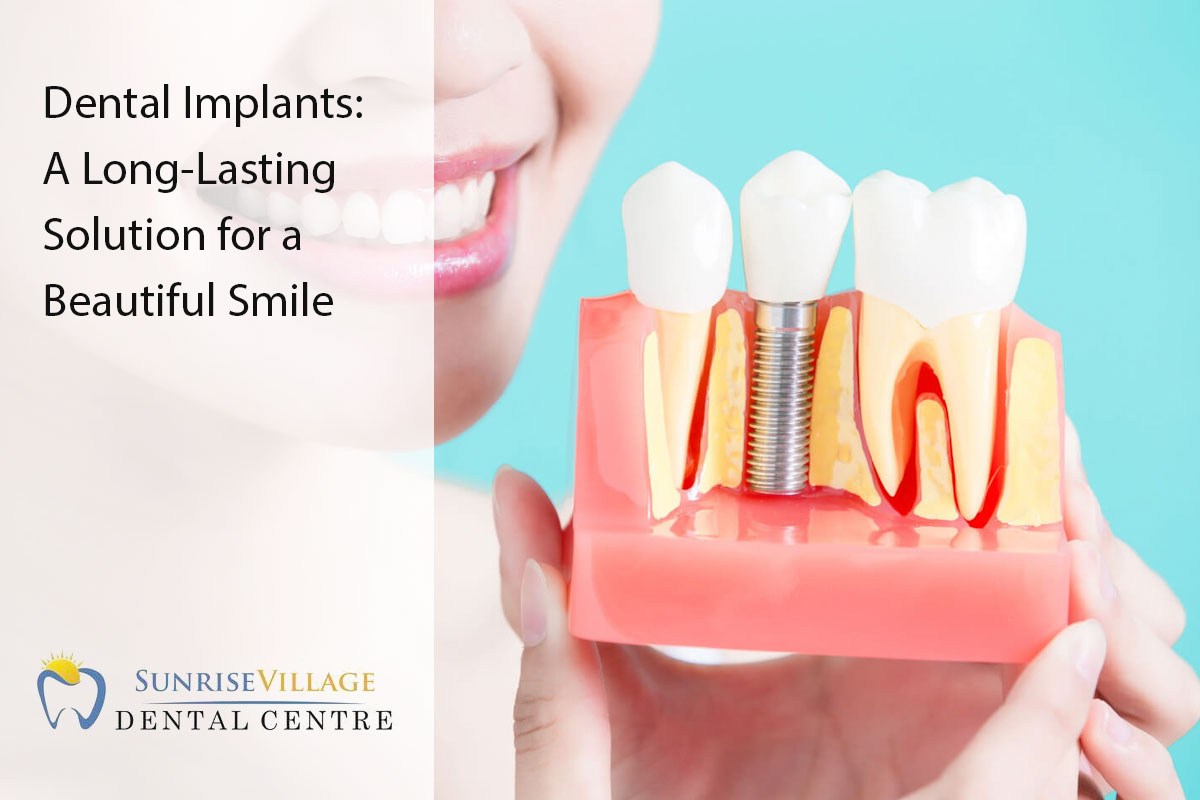
Tired of hiding your smile due to missing teeth? Dental implants could be the perfect solution. They offer a durable and natural-looking way to restore your smile and boost your confidence. We’ll guide you through all you need to know about dental implants.
Reasons to choose dental implants
Dental implants have emerged as the gold standard in tooth replacement solutions, offering numerous advantages over traditional options like bridges and dentures. Here are some key benefits of dental implants:
- Durability and Longevity: Dental implants can last a lifetime with proper care, unlike bridges or dentures, which may need replacement every 10-15 years.
- Cost-Effective: Their long-term reliability makes dental implants a more cost-effective solution as they reduce the need for frequent replacements or repairs.
- Jawbone Preservation: Implants integrate with the jawbone, preventing bone loss and preserving the natural structure of your face, which can prevent a sunken or aged appearance.
- No Impact on Surrounding Teeth: Unlike bridges, dental implants don’t require modification of adjacent teeth, allowing healthy teeth to remain intact.
- Natural Functionality: Dental implants function like natural teeth, allowing you to eat, speak, and smile confidently without the discomfort of removable dentures.
The dental implant procedure
The process of getting dental implants typically involves several stages, each designed to ensure a successful and long-lasting outcome. Here’s the process of getting dental implants:
- Initial Consultation: Your dentist or oral surgeon assesses your oral health, takes X-rays or 3D scans, and creates a personalized treatment plan. This may include evaluating the jawbone’s condition and discussing your medical history.
- Tooth Extraction (if needed): If the damaged or decayed tooth is still present, it will be extracted. In some cases, the implant can be placed immediately after extraction.
- Bone Grafting (if needed): If your jawbone lacks sufficient density, a bone graft may be performed to strengthen it, ensuring a stable foundation for the implant. This step may require additional healing time.
- Implant Placement: During the surgical procedure, the dental implant, a titanium post, is inserted into the jawbone. The area is then allowed to heal, a process called osseointegration, where the bone fuses with the implant, typically taking a few months.
- Abutment Placement: Once the implant has fully integrated with the jawbone, a small connector called an abutment is attached to the implant. This will hold the final restoration (crown) in place.
- Crown Placement: After the gums have healed around the abutment, a custom-made crown that matches your natural teeth is placed on top of the abutment, completing the procedure.
- Final Check-Up: A final visit ensures the implant is securely in place, and your bite and overall function are checked for comfort.
Recovery after dental implant surgery
After dental implant surgery, some discomfort and swelling are normal. However, with good care and follow-up, most people recover smoothly. Here are the key steps to ensure proper healing:
- Initial Healing: In the first few days, you may experience some swelling, bruising, and minor bleeding. Over-the-counter pain medications and ice packs can help manage discomfort.
- Oral Hygiene: Keeping your mouth clean is crucial. Gently rinse with warm salt water, but avoid vigorous swishing. Brush your teeth carefully, avoiding the surgical area.
- Diet: Stick to soft foods for the first few days to avoid putting pressure on the implant site. Gradually reintroduce solid foods as you heal.
- Follow-up Appointments: Attend all scheduled follow-up visits with your dentist or oral surgeon to monitor your progress and ensure the implant is healing properly.
- Rest and Recovery: Take it easy for the first few days. Avoid strenuous activities and follow any specific instructions from your dentist regarding physical activity.
- Long-term Care: Once healed, maintain good oral hygiene and regular dental check-ups to ensure the long-term success of your dental implant.
Care and maintenance of your dental implants
To keep dental implants in good condition and ensure their longevity, follow these care and maintenance tips:
- Brush Regularly: Brush your teeth twice a day using a soft-bristled toothbrush and non-abrasive toothpaste. Pay attention to the area around the implant.
- Floss Daily: Floss around the implant daily to remove plaque and food particles. A floss threader or water flosser can help.
- Use Mouthwash: Rinse with an antibacterial mouthwash to reduce plaque buildup and maintain oral hygiene. Avoid alcohol-based mouthwashes.
- Regular Dental Visits: Schedule regular check-ups and professional cleanings with your dentist to monitor the health of your implants and surrounding tissues.
- Avoid Hard Foods: Steer clear of hard foods that could damage the implant or surrounding teeth.
- Quit Smoking: Smoking can affect healing and increase the risk of implant failure. If you smoke, consider quitting.
- Stay Hydrated: Drink plenty of water to keep your mouth hydrated and support overall oral health.
- Watch for Problems: Be alert for signs of trouble, such as pain, swelling, or redness around the implant. Contact your dentist if you notice any issues.
Conclusion
Dental implants provide a durable, natural-looking solution for missing teeth, blending seamlessly with the jawbone to restore function and appearance while preventing bone loss. With proper care, they can last a lifetime, enhancing your bite and boosting your confidence. At Sunrise Village Dental, our expert team uses advanced technology and personalized care to guide you through the implant process and help you achieve a stunning smile. Call us at (604) 253-2433 today to explore the transformative benefits of dental implants.
